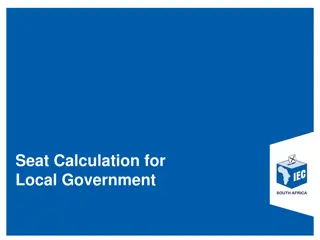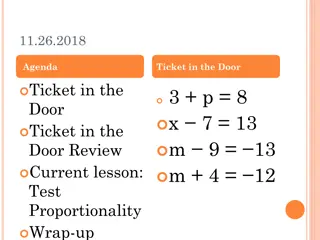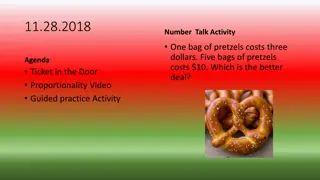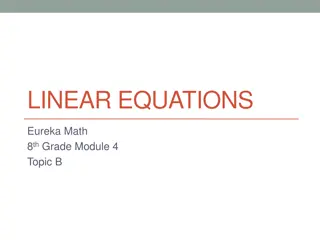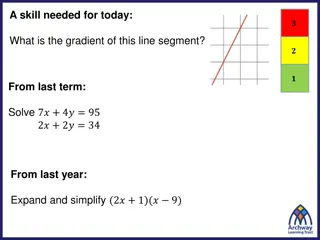Understanding the Constant of Proportionality in Real-Life Scenarios
Explore examples involving the constant of proportionality, also known as the unit rate, to understand how relationships between quantities can be represented. In these scenarios, calculations revolve around baking cookies for a school's Bake Sale and spending money on bowling games, showcasing how to determine unit rates and total costs based on the given information.
Download Presentation

Please find below an Image/Link to download the presentation.
The content on the website is provided AS IS for your information and personal use only. It may not be sold, licensed, or shared on other websites without obtaining consent from the author. Download presentation by click this link. If you encounter any issues during the download, it is possible that the publisher has removed the file from their server.
E N D
Presentation Transcript
The Constant of Proportionality (a.k.a: the unit rate)
Example 1: After school, Brandon told his Mom that he had volunteered to make cookies for the school s Bake Sale. He planned to make 3 cookies for each of the 96 students in 7thgrade. Brandon s Mom told him that he could bake 36 cookies on two cookie sheets. 1a. Is the number of cookies baked proportional to the number of cookie sheets used? Complete the table below to organize the information. # of cookie sheets # of cookies baked # of cookies baked # of cookie sheets This is a proportional relationship. The unit rate is 18 cookies per sheet. 2 36 36/2 = 18 cookies per sheet 4 72 72/4 = 18 cookies per sheet 8 144 144/8 = 18 cookies per sheet The constant of proportionality is 18.
1b. How many cookies does Brandon need to bake for the Bake Sale? 96 students ( 3 cookies per student) =288 cookies 1c. It took 2 hours to bake 8 sheets of cookies. If Brandon and his Mom start baking at 4:00 p.m., when will they finish baking cookies? 288 cookies . 18 cookies per sheet =16 sheets of cookies needed If it took 2 hours to bake 8 sheets of cookies, it will take 4 hours to bake 16 sheets of cookies. They will finish baking at 8 p.m.
Example 2: Last week, Lenny spent $18 to bowl 4 games. This week, he spent $27 to bowl 6 games. Lenny owns his own bowling ball and shoes, so he only has to pay for each game that he bowls. 2a. If each of the games costs the same amount of money, what is the constant of proportionality between the money spent and the number of games played? Complete the table below to organize the information. # of games Money spent ($) Money spent # of games 4 18 $18/4 = $4.50 per game 6 27 $27/6 = $4.50 per game The unit rate is $4.50 per game. The constant of proportionality is 4.50.
2b. If Lenny bowls 9 games in the tournament next weekend, how much will he have to pay? Total amount spent = (cost per game) (number of games) Total amount spent = (4.50) (9) Total amount spent = $40.50





